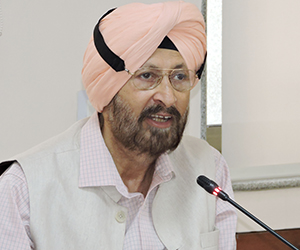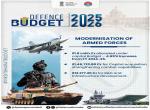The battle hardened Indian army, the fourth largest in the world, has been led by many able Chiefs, but few of them have made the effort to record their experiences for posterity. Nor have many naval and air force chiefs done so. As a result, the shortcomings in the national security decision making process at the apex level and the state of civil-military relations – often precarious – have gone mostly unreported. In fact, it is apparent from the spate of writings in the media on the 50th anniversary of India’s war with China in 1962 that many of the importance lessons of that fateful campaign remain unlearnt. General J.J. Singh’s admirably written autobiography A Soldier’s General is a refreshing change and a welcome addition to the writings of the former armed forces Chiefs that are available today.
General J.J. Singh, a third generation soldier, comes from a family with a rich tradition of military service. The first half of the book tells the story of the General’s early life as a young officer in a battalion of the Maratha Light Infantry and his ‘bond of blood’ with his soldiers; his service in India’s border areas during his formative years; the very successful command of a battalion of the Marathas; an eventful tenure as a brigade commander, including sustaining a wound in combat, during the early years of the insurgency in Kashmir; the importance training courses attended by him; his experience as a Military Attaché in the Indian embassy in Algeria; his rapid rise through the military ranks to flag rank on the strength of a brilliant career backed by dedication and hard work; his handling of the Siachen dispute and Pakistan’s misadventure during the conflict in Kargil in 1999 as an Additional Director General in the Military Operations Directorate at the Army HQ; his participation in Operation Parakram as a Corps Commander; and, his two tenures as a Commander-in-Chief, first of the Army Training Command and then the prestigious Western Command.
The penultimate part of the book records General J.J. Singh’s experience as the Chief of the Army Staff (COAS) – the Jangi Laat, as Army Chiefs were called in earlier times – and his contribution as the Governor of Arunachal Pradesh. From an analyst’s perspective, this chapter is perhaps the most enlightening and noteworthy. As the COAS, the General had to provide directional guidance to the army’s varied operational commitments for border management and internal security duties. It is not usually realised that the Indian army has been continuously deployed for border management along many of India’s land borders, particularly along the LoC in Jammu and Kashmir (J&K). It is also heavily committed in counter-insurgency operations since the late 1950s in the north-eastern states and since 1989-90 in J&K. This situation has been aptly described as ‘nation at peace, army at war’. As the chief operational commander, the COAS spends a great deal of his time in giving directional thrust to operational planning, while also visiting the areas where the army is deployed for active operations. The finer nuances of these operations have been very well captured in the book. The General’s direction to the army to deal with the insurgents with ‘an iron fist in a velvet glove’, that is, firmly but fairly, while simultaneously waging a battle to win hearts and minds of the local population, was very well received.
The author has written extensively about the shortcomings in India’s higher defence management system and made many recommendations to improve the systems. He suggests ‘inclusive and substantive’ integration between the armed forces HQ and the Ministry of Defence with cross postings and officers working together as teams ‘on the same lines as is the practice in other major democracies’. He advocates creation of the post of the Chief of Defence Staff (CDS) of five star rank ‘who should be vested with operational command of the three services’. The recommendation made for the post of permanent chairman of the CoSC by the Naresh Chandra committee recently has fallen well short of the requirement of a five star CDS that has been suggested by the former army Chief and is endorsed by most members of the strategic community. It is time the government appoints a CDS to provide single-point military advice to the PM and the Cabinet Committee on Security. The government will have to follow a top down approach as the Indian air force continues to oppose this key reform in the management of higher defence.
As the Chairman, CoSC, the author dealt with issues concerning India’s nuclear forces and was part of the defence diplomacy efforts made to enhance the country’s foreign policy objectives. He also grappled with the fallout of the recommendations made by the 6th Pay Commission and the implementation of Part II of the report of the Ajay Vikram Singh Committee. All of these find mention in the book. The author also states his vision for the future Indian army and the modernisation that must be undertaken. He comments at length on his command and leadership experience and lays down pointers for future commanders to excel. He pays his own personal tribute to the fighting soldier – the man behind the machine – and spells out the initiatives taken for him.
A Soldier’s General is a well rounded autobiography by an accomplished soldier. It is the story of a life well lived; it is a tale that is simply told. It captures the essence of army life in battalions and higher formation HQ skilfully and with great feeling. It also provides glimpses into decision making at the higher levels of the services HQ and the national level. The Marshal of the Air Force, Arjan Singh, said during the launch of the book in New Delhi, "I have no hesitation in saying it is a must read for all personnel of the armed forces, particularly the younger ones." It must also be read by all those who are involved in national security decision making and policy analysis as well as academics and scholars.
A Soldier’s General: An Autobiography. By Gen. JJ Singh (Harper Collins Publishers India), 386P., Rs. 799.
Published Date: 20th November 2012










Post new comment